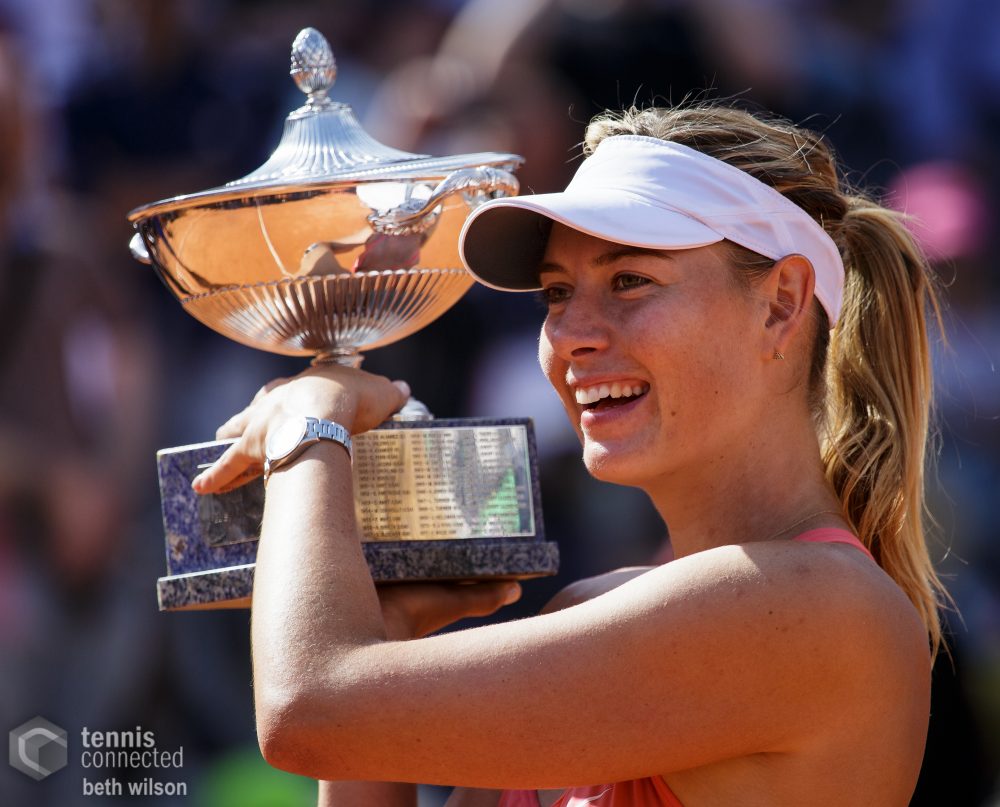Welcome to Tennis Elbow, the column that looks back on the week that was in the world of tennis. This week, Charles Blouin-Gascon recaps the bombshell that Maria Sharapova dropped on the tennis world.
Maria Sharapova announced her retirement from tennis last Wednesday.
’Tis true, she even wrote a full letter about her decision and the motivating factors. She announced her retirement, but it’s likely this is far from the last we see of her publicly.
Why? You don’t announce your retirement from the sport—the sport, she wrote, that “gave [her] a life”—that you’ve played for a full 28 years of your life with an exclusive letter published in Vanity Fair if you intend to step away from the limelight. No, maybe we won’t see Sharapova’s picturesque serving motion or forehand on the tennis courts soon, but this isn’t the last we see of the tall Russian and her Sugarpova candy.
Sharapova’s retirement, at the relatively young age of 32 years old, is quite the big deal for tennis as a whole. Losing one of the sport’s biggest and brightest ambassadors— don’t let the past four years tell you otherwise—has to hurt in the long run even if Sharapova, now ranked No. 373, had become only a shell of herself over the past few years.
We’ll remember the Russian as one of the greatest players of her time. Some might scoff at the notion but Sharapova’s ultimate resume is truly untouchable: over her career, Sharapova amassed 645 wins, 36 singles titles, including five Grand Slam tournaments, and almost $39 million USD in prize money. The great champion is one of the rare few who did manage to reach the No. 1 ranking in the world, a feat she accomplished in August 2005 for the first time.
But beyond everything else, what will ensure Sharapova’s place in history is the fact that she captured the career Grand Slam. Since the start of the Open era, this is something only Margaret Court, Chris Evert, Martina Navratilova, Steffi Graf, Serena Williams and Sharapova have accomplished. Quite the elite company, wouldn’t you say?
We’ll also remember her as one of the fiercest competitors women’s tennis has ever seen. She might not have always remained competitive in every match she played (who actually really is in all honesty?), but deep in her heart she always believed she would be. She explains her determination in her retirement letter as “[one] of the keys to my success was that I never looked back and I never looked forward. I believed that if I kept grinding and grinding, I could push myself to an incredible place.”
And because you’ve likely seen the joke everywhere as well, we’ll also remember Sharapova as someone who lost to the aforementioned Williams quite often with only two wins in 22 matches head-to-head. (As if there’s anything wrong with losing to Serena Williams.)
We’ll also remember the 32-year-old as a cheater-but-it’s-more-complicated-than-that. She was labeled and vilified as a cheater for having tested positive for meldonium in 2016; for that, she was given a 2-year suspension, of which she served 15 full months ultimately. However, the Sharapova doping case was ultimately much murkier than we might have expected, compelling us to proclaim that she had definitely earned the right to play in May 2017.
Sadly in this case, we’ll also remember the Russian as someone who was betrayed by her body. Her Wikipedia page, after all, has three mentions of a shoulder injury in its subtitles, an issue that dogged her throughout her playing days. Even during her last moment under the limelights last year at the US Open against Williams, Sharapova was far from 100% and had needed to get her shoulder numbed. In light of this, the 6-1 6-1 defeat makes much more sense.
Although you could see things the other way too. You could see Sharapova’s decision to retire as one of agency and someone taking things in their own hands. As the decision of someone who wants to leave before it’s too late. As someone who, as she puts it in the letter, “accepted those final signals when they came.”
And if you see things this way, then Sharapova is leaving on her own terms and what’s not to like about that?
Follow Charles Blouin-Gascon on Twitter @RealCBG
















